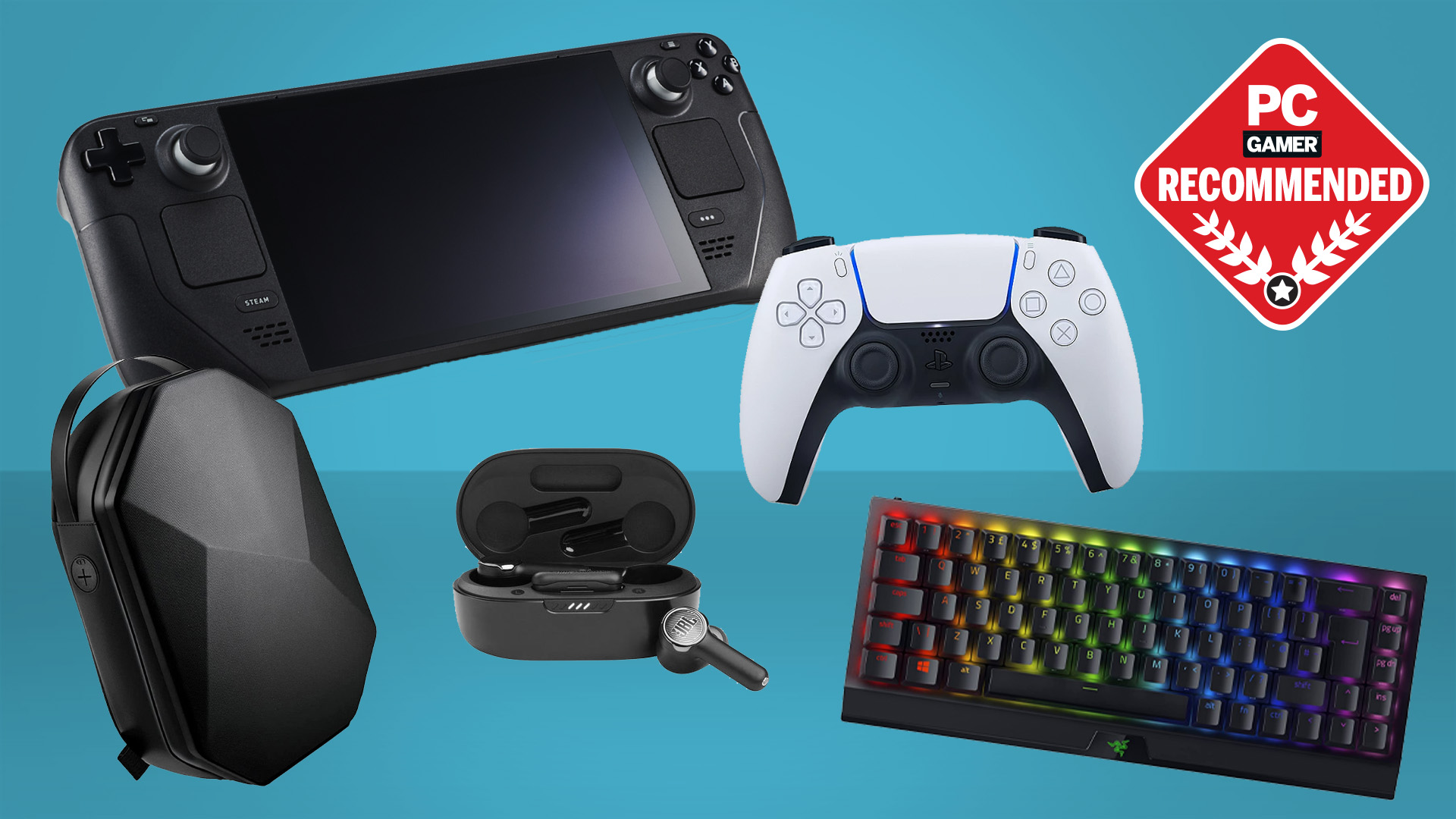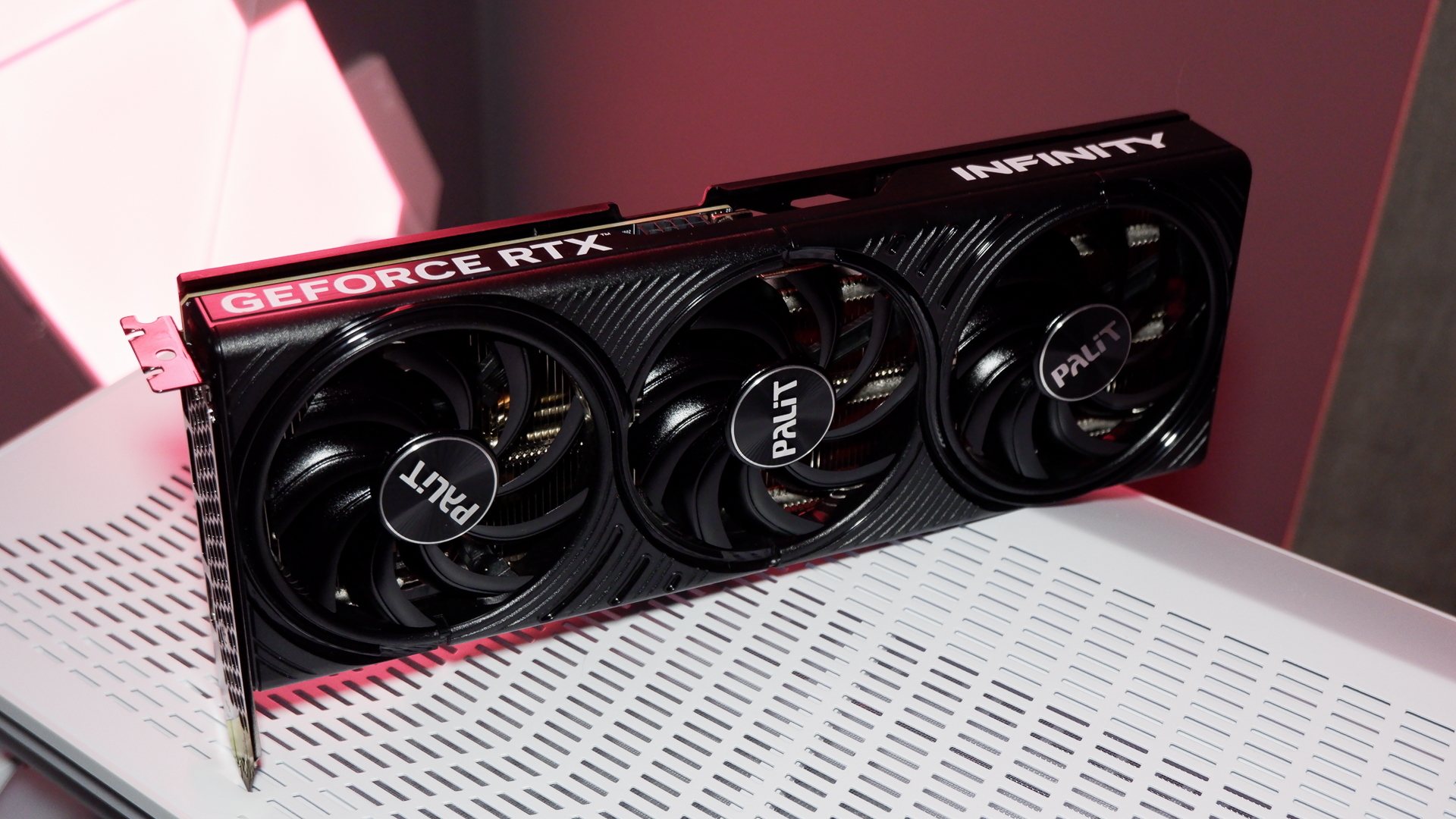Gaming PCs with no visible cables are the boldest design change I've seen in a decade of building computers
From motherboards and power supplies sneakily hiding cables, to graphics cards and fans that entirely get rid of them, we're seeing the end of cluttered gaming PCs.
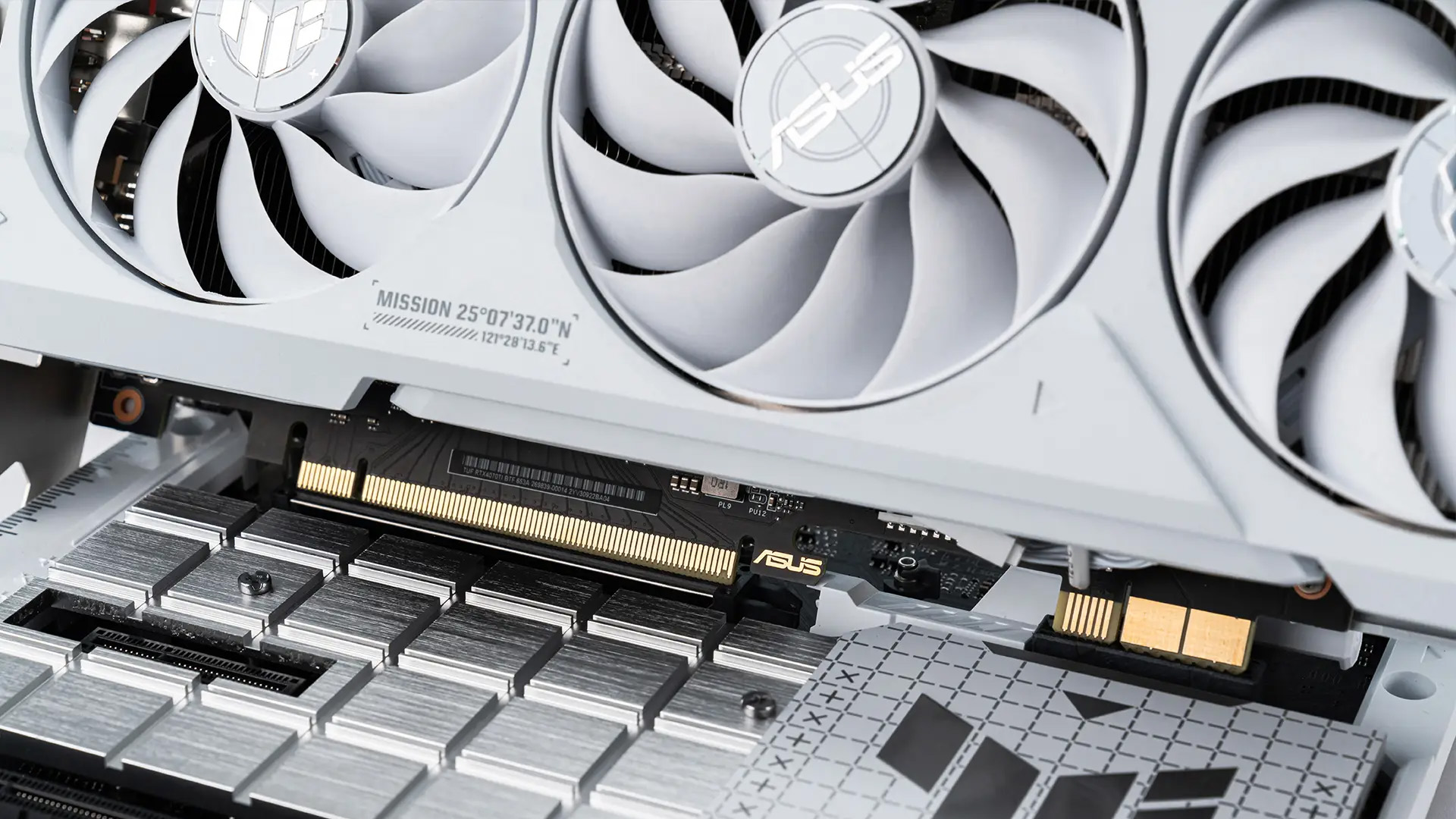

This month I've been testing: Ultra-high polling rate gaming mice, to see what all the fuss is about; and trying to figure out what makes the best PC fan.
This month I have been playing: a bit of Baldur's Gate 3, but mostly I've been caught up in Helldivers 2 and Content Warning.
Cable management is not my forte, but when I'm close to completing a gaming PC build there's nothing that bugs me more than a stray cable that I have to find some way to hide, be that around my liquid cooler, running across the VRM or looped under the motherboard 24-pin. I simply don't bother for my test bench—I stare at a mess of cables erupting from it for the better part of every work day.
Though I shouldn't have to, and I might not for much longer.
A gaming PC today looks a lot different than one from 10 years ago. I was reminded of this only recently when clearing out an old Corsair Air 540 chassis I had in storage—I still love its cuboid shape but it looks dated to me now. Yet many of the changes that have occurred over the past decade are only skin-deep. Get down to the core functionality, design and interplay of the core components and they work in much the same way they always have.
Take a fan, for example. Most fans come with a short cable with a three- or four-pin connector on the end, which runs to a complementary header on a motherboard. Or a GPU, which connects to your motherboard via a PCIe slot but still requires one, two, maybe even three extra power cables to keep it juiced up.
The same goes for a motherboard. These central hubs haven't changed much in decades. There are some Mini-ITX models with creatively configured parts, but ask a PC gamer to draw one and we're all going to come up with the same sort of sketch, artistry notwithstanding. Standardisation determines the CPU is plonked towards the top, the IO down the left-hand side and an array of headers for power and connectivity generally placed around the upper, right-hand and lower edges. The names and sockets change but the connections stay the same.
A more drastic change to how gaming PCs are hooked together is brewing, however.
A few PC firms are rejigging how they think about cable management and the core connectors required by any gaming PC, and they appear serious about making changes that stick this time. If they do, a cable-free future isn't too far off for gaming PCs, or at the very least one where they're all hidden around the back.
The biggest gaming news, reviews and hardware deals
Keep up to date with the most important stories and the best deals, as picked by the PC Gamer team.
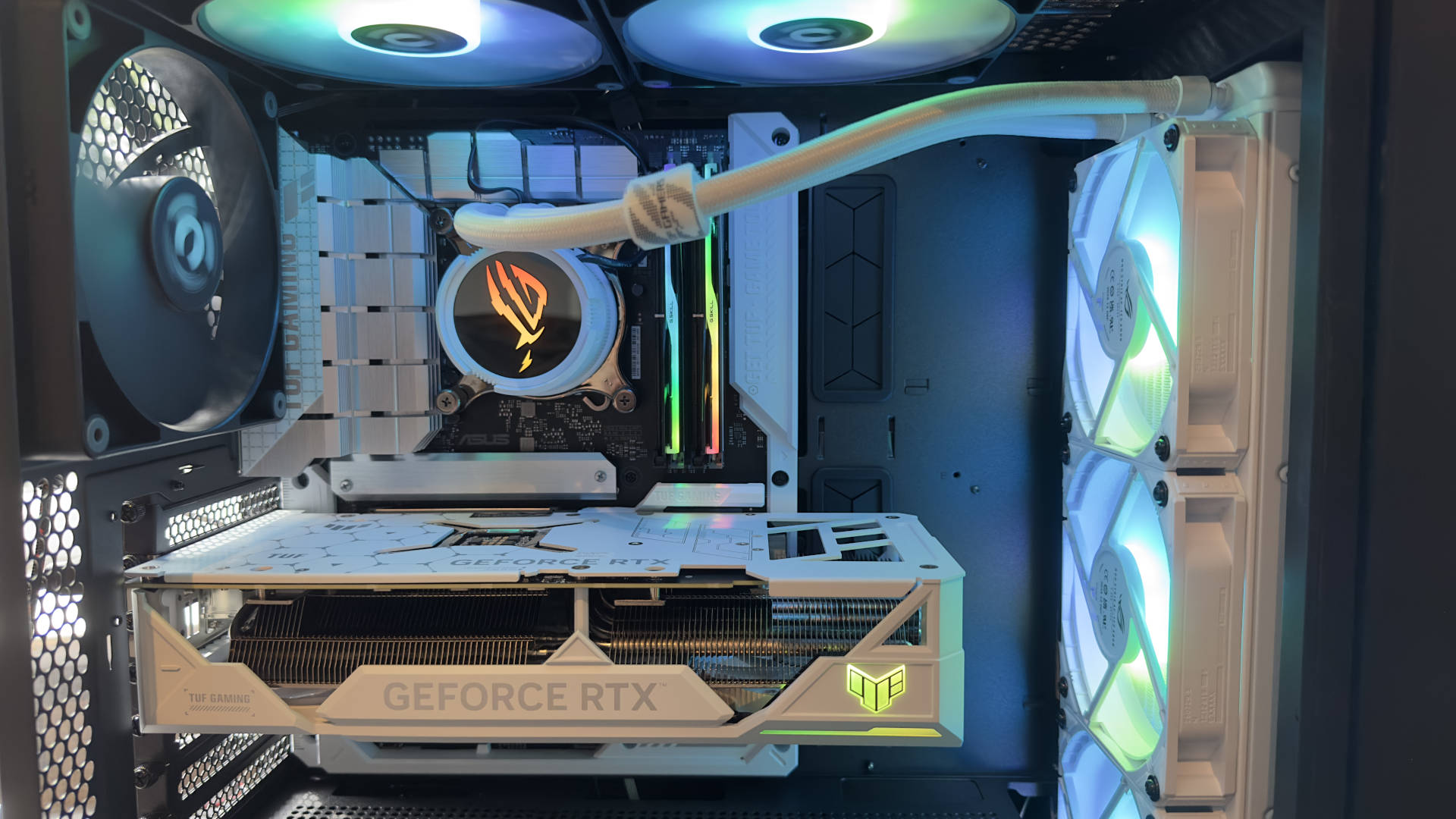
Asus and MSI have been leading the charge in dispatching with the old school way of thinking, namely where it comes to motherboards and how various components and cables connect to them. MSI has the Back-Connect, Asus has its BTF gear. The latter our Nick has tested and sings the praises of, calling it "the future of gaming and enthusiast PCs", and both of which I saw a whole lot of over at CES, when I previously said they were "shaping up to be one of the few fun concepts that make it mainstream."
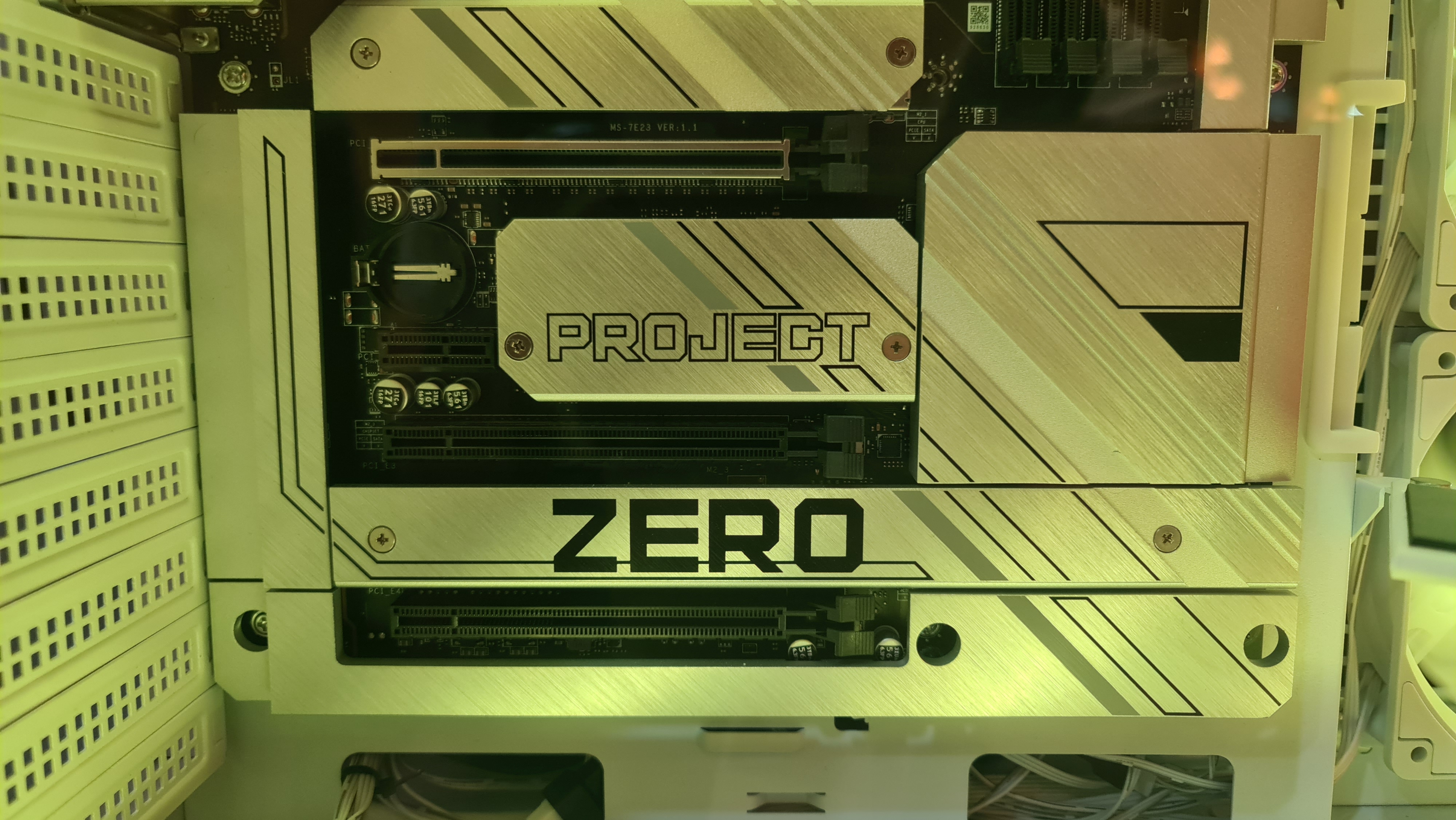
Whichever you're talking about, BTF or Back-Connect, it works by taking the power and data connections from the front of the motherboard and installing them in the back. Sounds simple, right? Motherboards are incredibly complicated, most of all beneath the surface, and redesigning how the many-layered PCBs are designed to ensure traces are reliably rotated is a big task. Thankfully, we've already a couple of options for suitable motherboards, as Asus and MSI manufacture their own.
Case manufacturers are jumping on board with gusto, too. There are already a few cases available that support the BTF and Back-Connect formats, such as the Thermaltake Ceres 330 TG ARGB. You could take a dremel to a standard case yourself, of course, but probably better to buy a specific case for the smoothest solution. I saw heaps of them over at CES this year, and I'm sure more are coming.
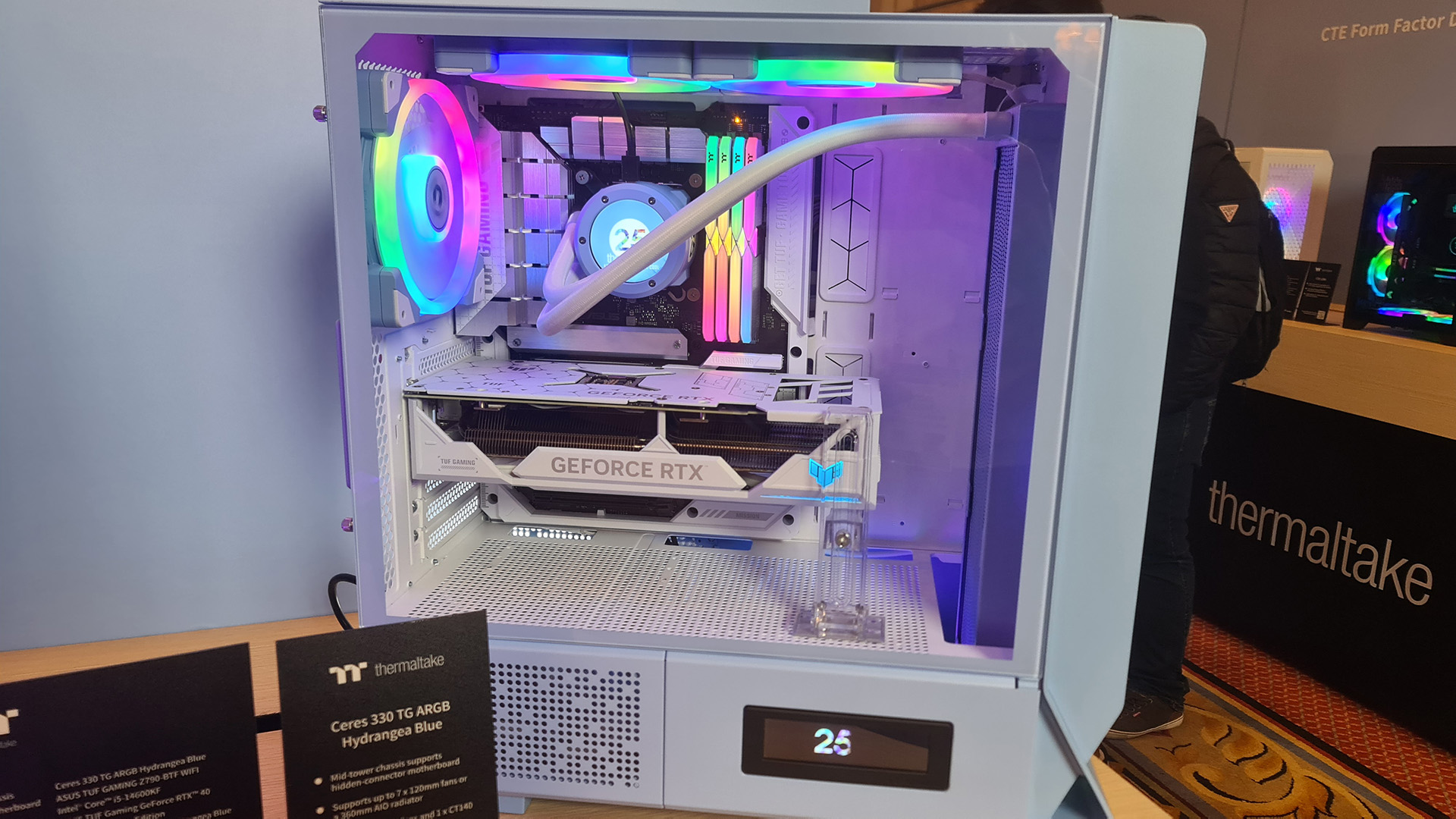
All of which helps cut down on motherboard cables, but Asus goes one step further with its BTF-compatible graphics card. It removes the PCIe power cables required of nearly all graphics cards over the past few decades, and replaces them with a single in-line connector along the same edge as the PCIe port. This requires support from the motherboard, and that's why only companies that offer GPUs and motherboards could even attempt such an approach without some sort of standardisation, but the result is a totally clean-cut PC devoid of ugly cable runs. There's also no need for fancy cable mods, though I usually quite like the look of those.
With that, we've killed off the bulk of a PC's cables. And yet still some remain.
One of the worst offenders for causing awful cable runs and being a pain for planning are case fans. Each fan comes with a cable (or two for some RGB models) and they're a required component within most gaming PCs. I know some diehard fanless fanatics will get annoyed at me for saying that without at least mentioning passive PC builds. So, there you go, passive builds also exist. For most of us, however, a fan is a requirement. They're a bit of a cable nightmare, too.
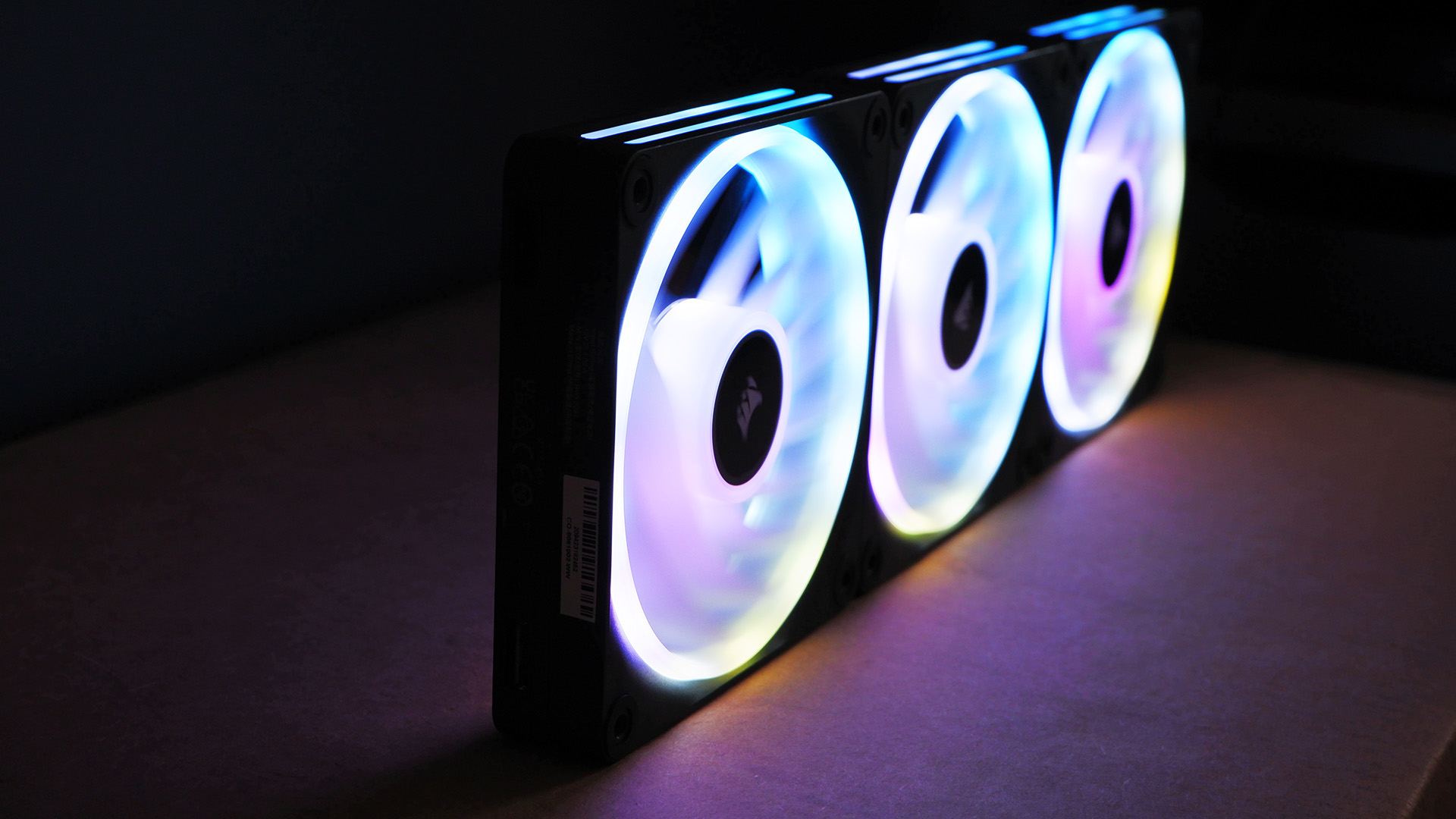
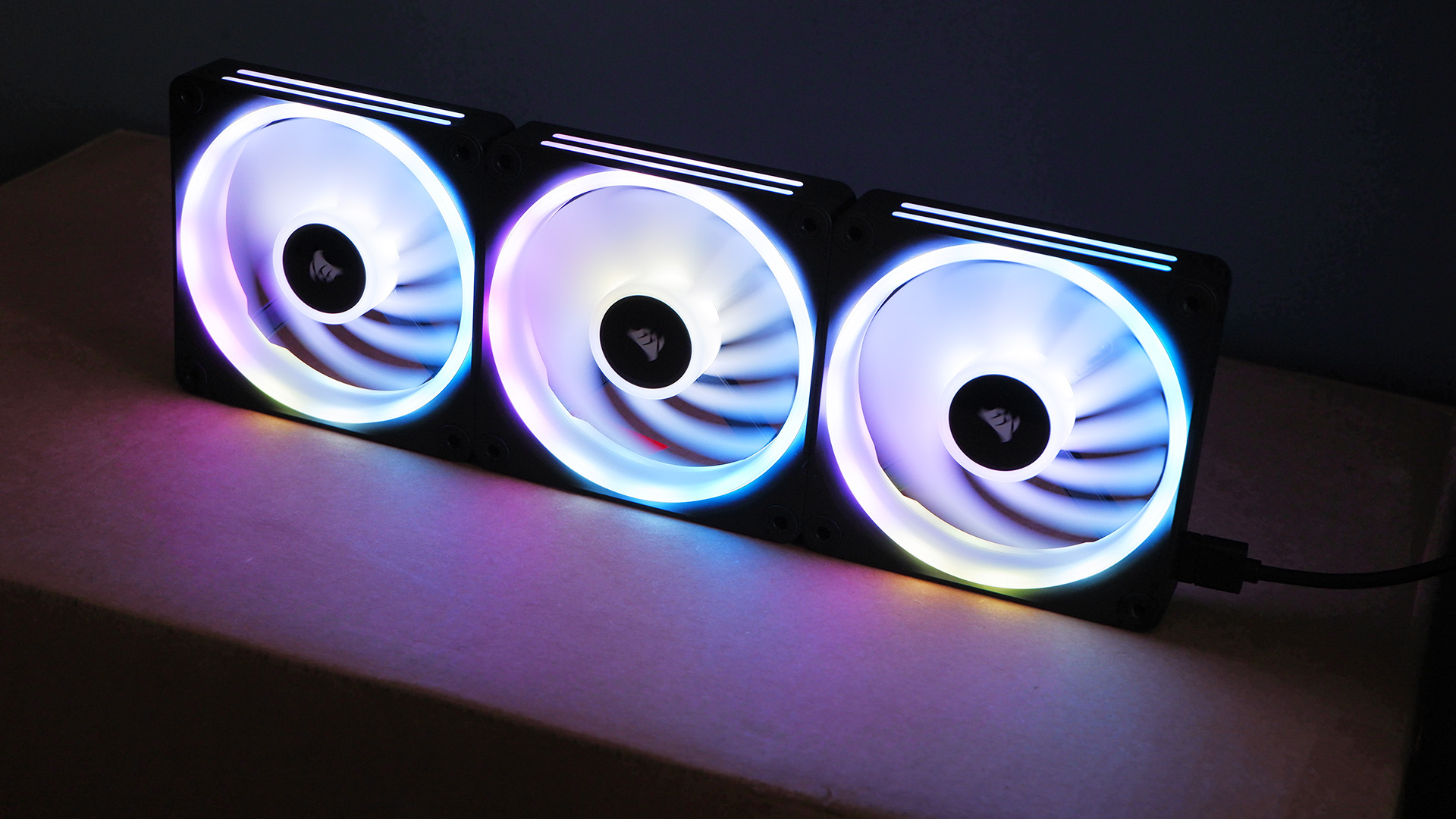
Except I've been playing around with a few fans lately that completely remove all cable runs from the equation. I've both Corsair's iCUE Link QX120 fans and Hyte's Thicc FP12 fans around the test bench right now, though there are plenty of options, including those from MSI, Lian Li, and Thermaltake.
They all use similar, but assumedly legally distinct, systems of connecting to one another. Each fan snaps to the next, creating a chain of interconnected and individually controllable fans. When a larger break is required, such as between top and side mounted cooling in a chassis, with the Corsair system you can use an iCUE link cable to continue the same chain, while the Hyte system requires a new Type-C cable back to a Hyte controller.
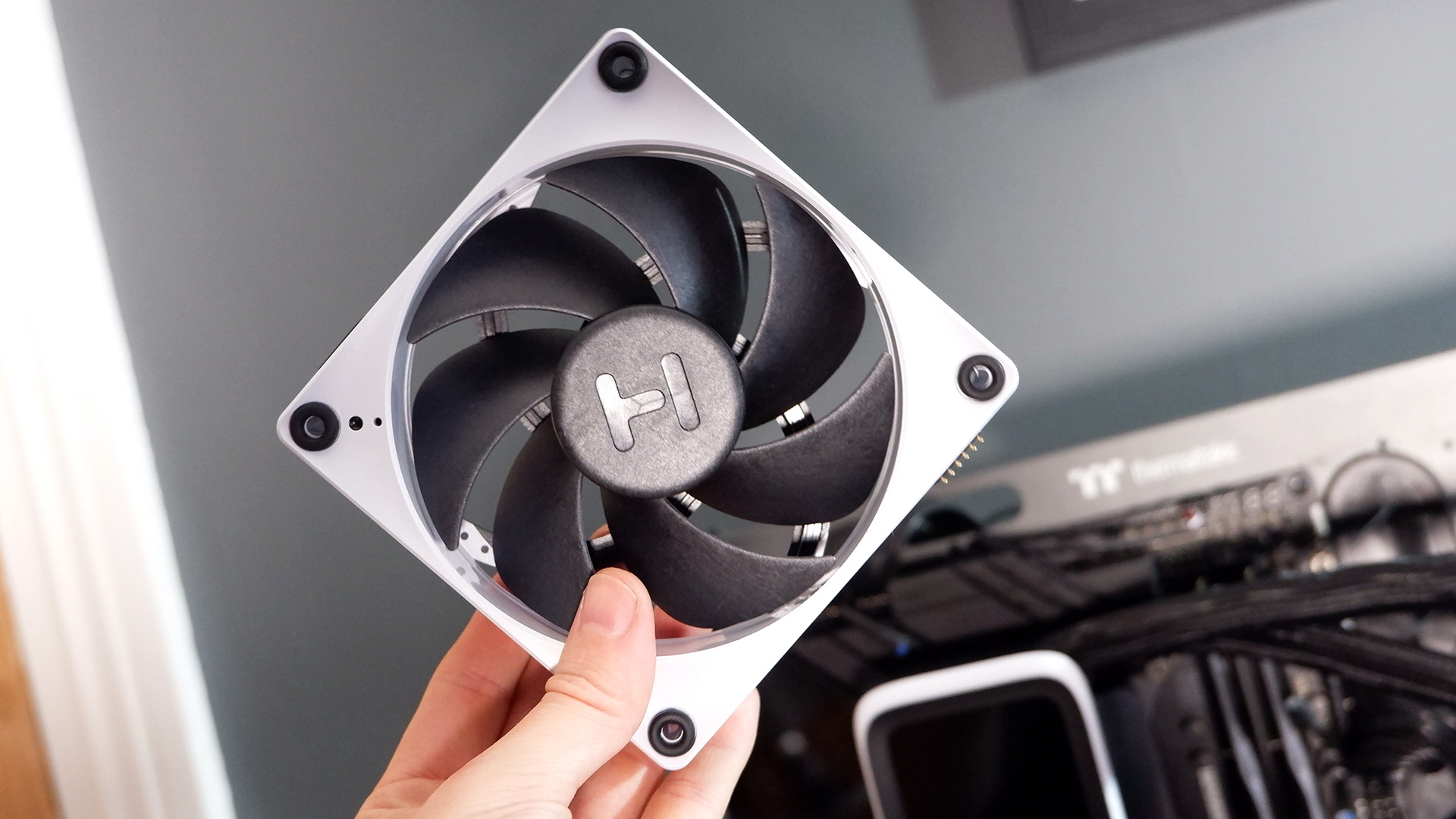
Two systems of daisy-chaining fans, and both deliver similar results: fewer cable runs, cleaner cases, and a more clean-cut aesthetic.
The Hyte fans came with the Thicc Q60 cooler, which keeps cables to an absolute minimum despite featuring a tremendously large screen. From the fans to the cooler itself, there are only a handful of cables linking together the entire thing. Hyte claims on its website: "Cables are just super gross, so we got rid of like all the cables."
If you thought that's most cables sorted, you'd be right. Though we haven't spoken about the nexus for cable clutter: the power supply. A black box spewing connectors forth can be pretty tough to tidy, though I've come across a great solution for that, too. It's a little more finicky, in that it demands a few things from a PC case in order to be actually usable, but Corsair's RMx Shift power supply takes some of the cable fuss out of the equation.
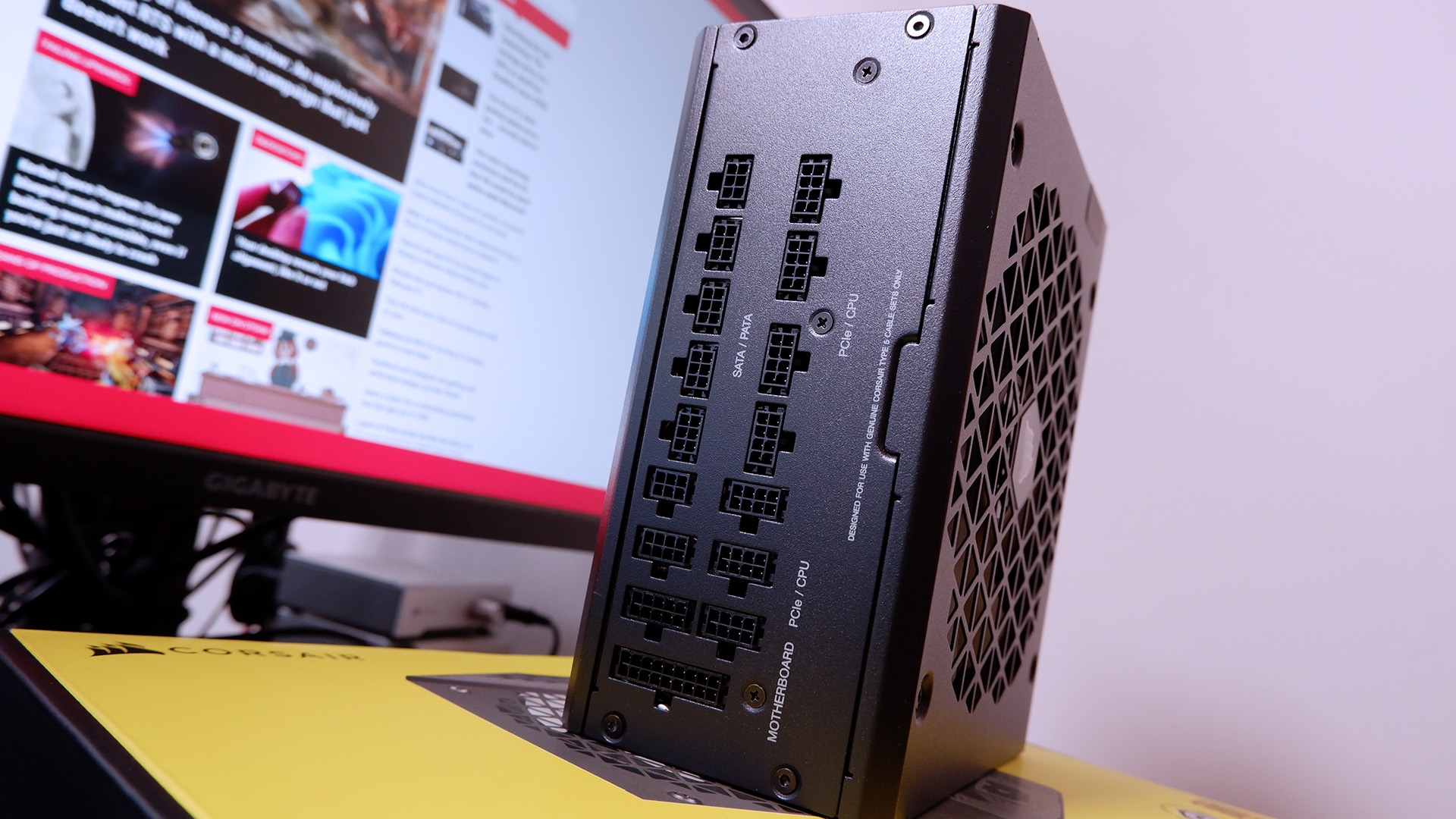
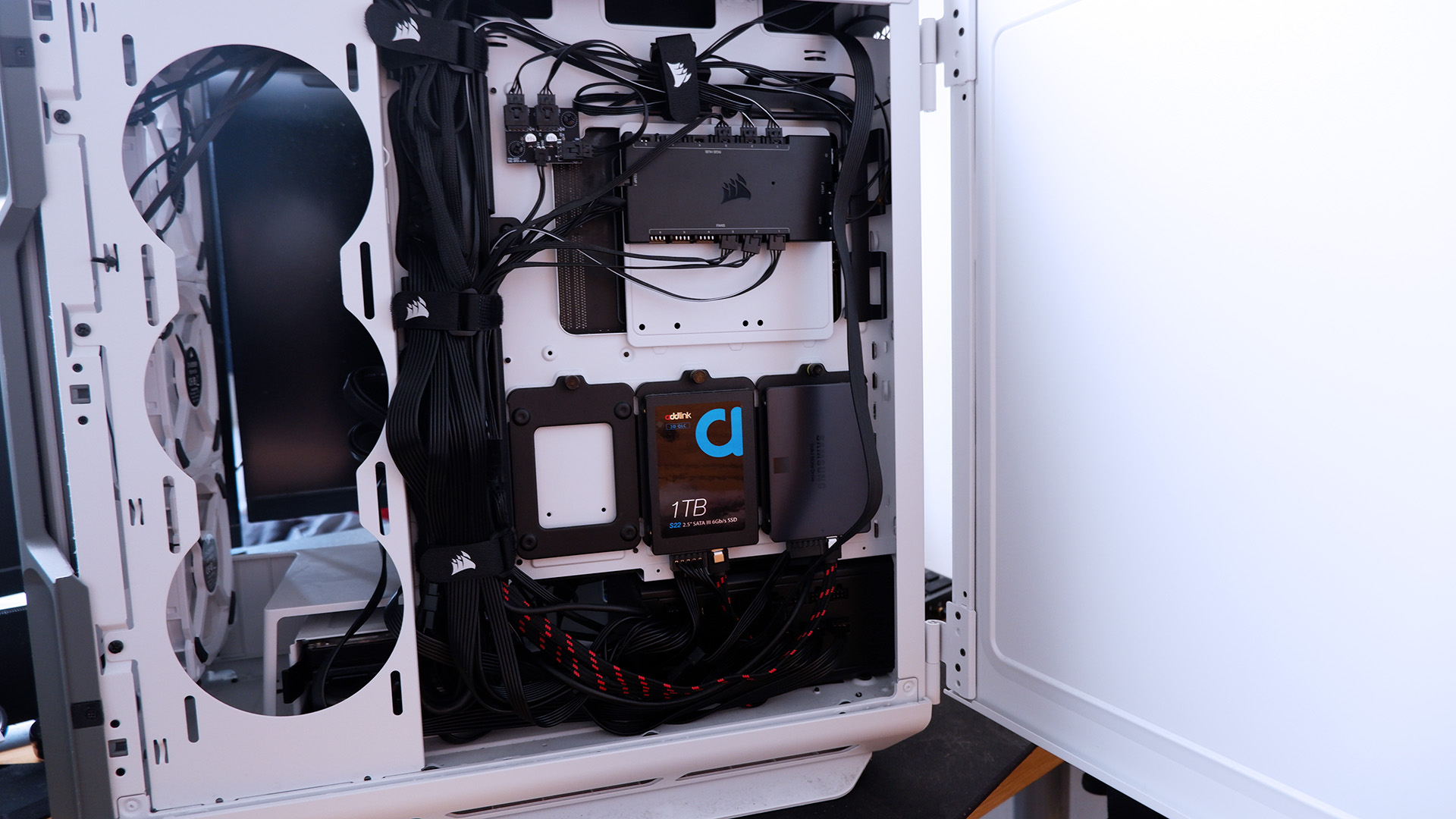
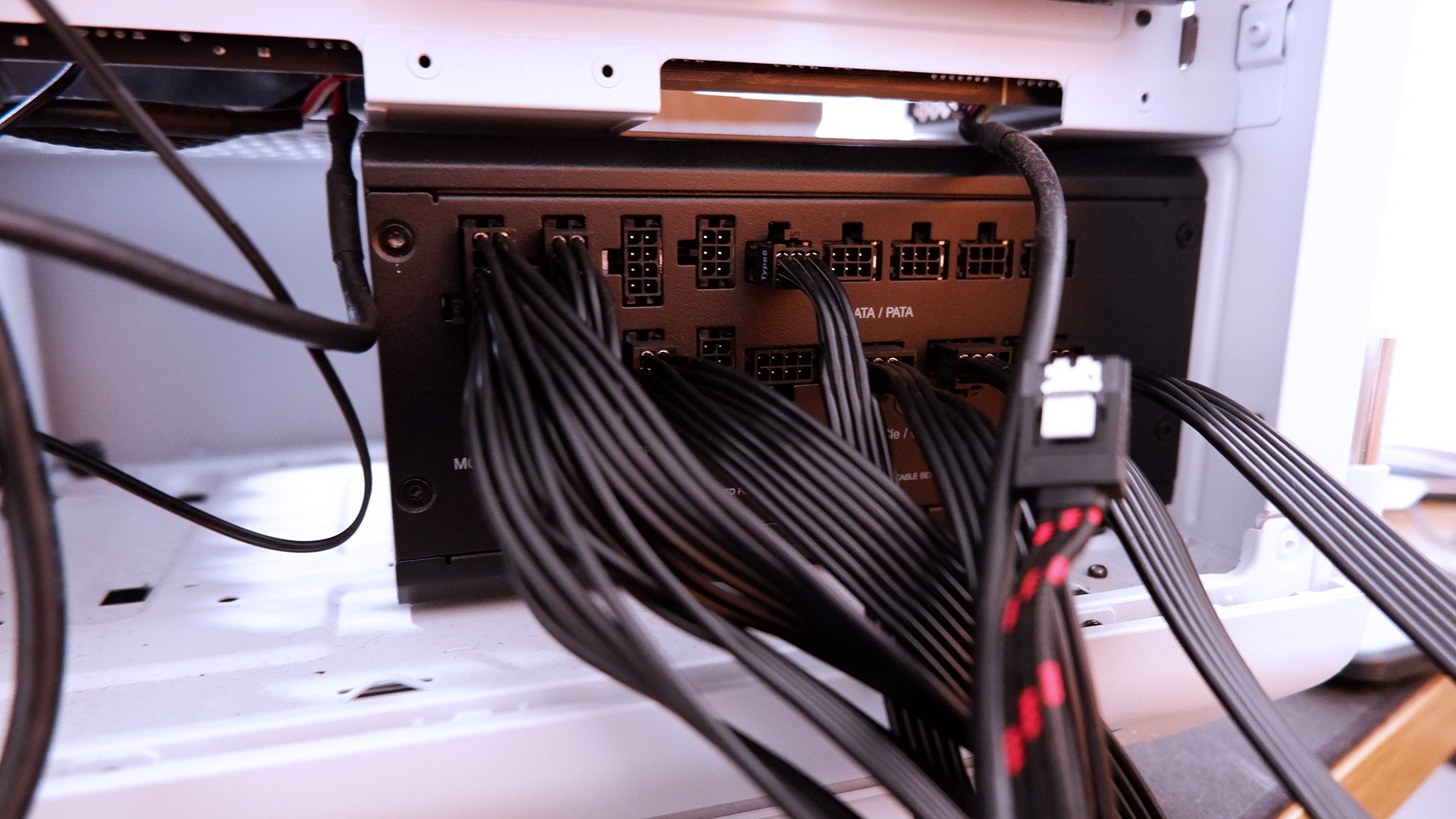
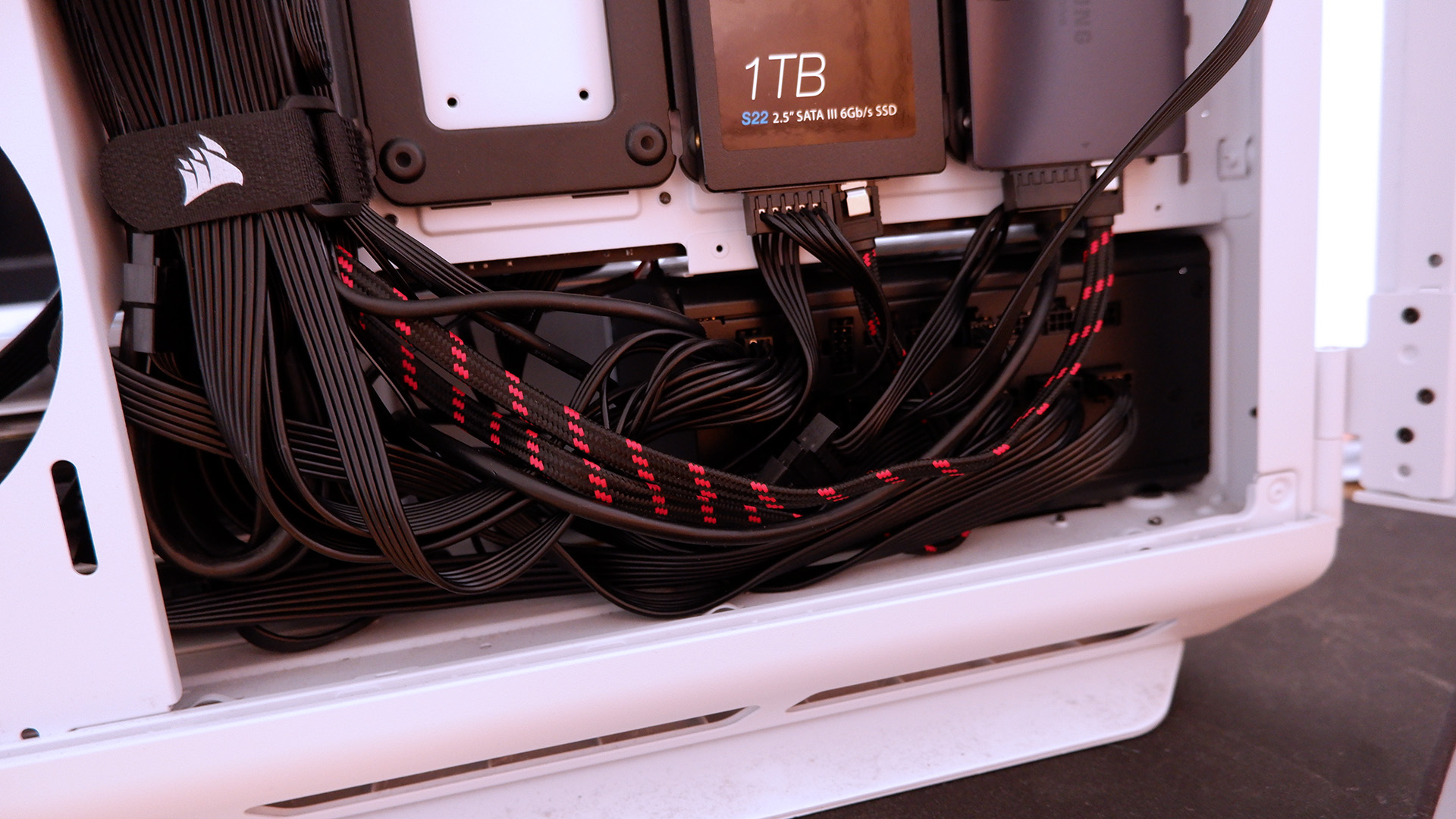
The RMx Shift is built to accommodate cables on the side of the case, thus protruding out towards a PC's side panel for easy access, rather than into the depths of the chassis. You could argue that it doesn't help with the mess, only reorients it, and you'd probably be correct. Though it also uses micro versions of all the PCIe connections to keep things trim.
Altogether the RMx Shift is a solid way for a serial tinkerer or lazy builder to quickly access each cable individually, without the need for removing shrouds or even the entire PSU itself.
I don't have every piece of the puzzle assembled, not yet anyways, but combine the board, fan, card, PSU and case I've mentioned here today and you're about as close to a truly cable-free PC as you could ask for. Some components are truly minimising cable clutter, others only hiding it, but all of a sudden us PC gamers are going from cable hell to cables going almost extinct.

Jacob earned his first byline writing for his own tech blog. From there, he graduated to professionally breaking things as hardware writer at PCGamesN, and would go on to run the team as hardware editor. He joined PC Gamer's top staff as senior hardware editor before becoming managing editor of the hardware team, and you'll now find him reporting on the latest developments in the technology and gaming industries and testing the newest PC components.
